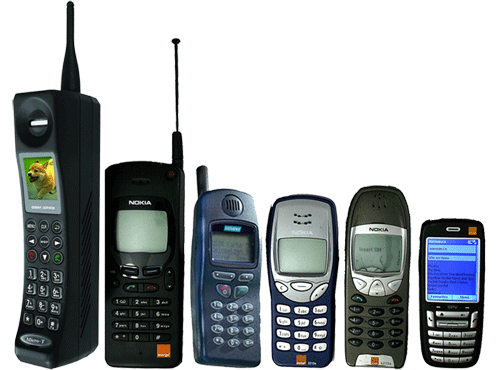 |
 |
|
 |
 |
About Us | Contact |
|
|
14/05/2010 - Interphone results at last!Finally, more than 10 years after its initiation, and 5 years after the first results were initially hoped for, the INTERPHONE project is about to offer the first pooled results and analysis of the 13-country research programme. The wait has been so long, and the results anticipated so strongly, that there is likely to be a lot of publicity surrounding the results when they are officially released next Tuesday (18th May 2010). In preparation, we provide a quick insight into our coverage and views on the INTERPHONE project so far. We started covering the results of individual Interphone papers in 2005, starting with the Shoemaker paper published in the BJC, showing no increase in risk from short term (< 10 years) phone usage, and an 80% increase risk for acoustic neuroma from long term (> 10 years) phone usage. This supported the earlier Swedish Interphone results. The spin machines started firing actively on both sides, from saying that the short term data is very reassuring and the long term increase was an artefact from few cases, and it is likely phone use is safe, all the way to saying that long term phone use causes brain cancer.
By 2007, it was becoming clear that a number of the papers were showing no long term increase in risk, but a statistically significant protective effect for all shorter term exposure categories. These findings are suspicious, and raised a number of alarm bells as to whether a short term protective effect (that then disappeared) is a logical conclusion, or whether there were some serious flaws in the INTERPHONE protocol coming through in the data. Our hypothesis was that the protective effect was caused by study flaws (originally well covered by Lloyd Morgan in his column on Powerwatch) that would lead to an underestimate of risk. We performed some very crude number analyses, adjusting the lowest exposure point to an OR of 1.0, and a trend of "1.0 at all exposures except for > 10 years" started to clearly appear. These analyses were in no way intended to be scientifically robust, but it was very interesting how consistently this demonstrated what Lennart Hardell had been finding for some time (for example: Hardell 2006 (I), Hardell 2006 (II), Hardell 2007) - An increase in risk was only beginning to appear in the longest term heaviest users, but it was consistently there in most collected data. Strangely, two members of the Danish Cancer Society, Joachim Schüz and Christoffer Johansen decided instead to consider that these findings were just reassuring that whatever effects there might be (and currently there was no evidence for any!) they would be small, stating "evidence that any large association of risk of cancer and cellular telephone use can be excluded.". Two well respected INTERPHONE authors immediately submitted a letter to the journal saying that any such conclusions are premature and not yet supported by the data, and it soon become clear that there was not even close to any agreement between the project researchers on how this apparently anomolous data should be interpreted.
As further INTERPHONE work was published in 2007, both a French study on acoustic neuromas and an Israeli study on salivary gland tumours confirmed the same trend: there was really nothing to see for short to medium term usage, but an increase (not always statistically signficant) could be seen creeping into the long term data. The Israeli study also found a statistically significant increase particularly strongly with ipsilateral use (using the phone on the same side of the head as the tumour was found). The initial criticisms on the ipsilateral data was that a corresponding decrease was found on the contralateral (phone use on the other side to the tumour) data. Whilst this is a fair criticism, and strongly indicates that recall bias (incorrectly remembering which side of the phone was being used) could be responsible for the ipsilateral increase, further analysis by Lloyd Morgan demonstrated that pooling the data on the increase in risk for the same side usage showed a significantly stronger overall increase in risk than the decrease in risk found in the opposite side usage - i.e. the bias is there, but the data still shows the effect if the bias is statistically controlled for. In 2008 we covered a paper by researchers from the University of Utah, who attempted to pool the epidemiological data of 5 interphone papers for signs of a trend. They found that there was no great evidence of an increase overall, although the > 10 year category had a marginally statistically significant increase in primary tumour risk of 25%. Interestingly, and supporting the points above, they failed to highlight the significance of the fact that overall they found a statistically significant protective effect (a 10% decrease) comparing all the cases to all the controls. This is of course because each of their included 5 papers had this strange trend of a statistically significant protective effect for every exposure category except for the most severely exposed, indicating strongly one of two possibilites: a) short to medium term use of a phone gives a protective effect that disappears after 10 years, or the far more likely b) the baseline of "no risk" in the exposed groups (supposed to be at OR = 1.0) was statistically significantly decreased due to flaws in the study design, and any increase found in the most exposed category will be proportionally underestimated as a result. As there are far fewer cases and controls in the highest exposure category, this skewing effect makes it remarkable that any significant increase could still be found in the pooled data for > 10 years of phone usage - the fact it does indicates the concerning possibility that long term usage may be a considerably greater relative risk than previously thought. International publicity for the issue rose steadily through 2008, with the primary investigator of the Australian group, Dr Bruce Armstrong, quoted as saying "I would not want to be a heavy user of a mobile phone. I think the evidence that has accumulated is pointing towards an effect of mobile phones on tumours. People might be shocked to hear that the evidence does seem to be coming more strongly in support of harmful effects." In the March of 2008 the Swedish Radiation Protection Authority (SSI) updated their information on EMFs and Health, bizarrely choosing to cite only the minority of the INTERPHONE studies that didn't find an increase from long term phone usage, ignoring each of the papers that were showing the early indications of a problem. Towards the end of the year we covered a paper from the Finnish INTERPHONE group, which again found the mysterious protective effect for all short term and medium term exposure categories, again disappearing for the longest term users. Maybe as an indicator that they felt the data was already badly flawed, the researchers did not want to make any statement to the statistically significant protective effect that they found, instead stating that "Our results do not provide support for an association between mobile phone use and risk of meningioma". This of course does not even begin to explain not only the protective effect they found, but also its mysterious disappearance in the long term user category. By the end of the year the BioInitiative working group were applying strong pressure on the INTERPHONE group to publish their already long overdue data.
2009 finally saw the possibility of the INTERPHONE group publishing the first sections of their data. Christopher Wild, having recently taken charge of the project at IARC from Elizabeth Cardis (who had recently moved from IARC to CREAL), made it publicly clear that publishing the data was a high priority as the delays were embarrassing to the agency. This was covered in detail by Louis Slesin at Microwave News, who has kept on top of all of the developments in the INTERPHONE saga, but already doubts were circulating as to whether or not the published data would be of value any more. Many of the flaws in the study design were becoming painfully apparent: children and young people, the group likely to be at greatest risk from any effects found, were not included in any of the datasets. DECT cordless phone use, something that would typically expose a digital phone user to a similar overall exposure than their mobile phone, was completely ignored when comparing cases to controls in the INTERPHONE papers (something that the Hardell group, with much more intuitively sensible data - ORs of ~1.0 in all categories except the highest usage - went to some effort to adequately control for). The typical latency period between initial exposure and the development of most of the tumours studied is 15 to 25 years. Very little data was collectable (over half the papers had less than 10 tumour cases) for those who had used their phone for greater than 10 years, and the ability to detect any trend when such a low proportion of tumours had had the chance to develop was very small. All of these significant confounders are likely to either underestimate, or dilute, the level of risk found in the data. The fact that such any consistency was found of increased risk from long term usage is potentially indicative of a large increased risk that has yet to realise even close to its full potential, and the INTERPHONE project, despite the investment of time and money it has taken, was looking less and less likely to be able to answer questions of exactly how big that long term risk was likely to be. In an attempt to cover as much of these issues as possible, Lloyd Morgan, ourselves, and a number of other concerned individuals collaborated to produce the "Cellphones and Brain Tumors: 15 Reasons for Concern, Science, Spin and the Truth Behind Interphone" document, often referred to simply as "15 reasons". Highlighting many of the problems with the INTERPHONE protocol, and attempting to dig deeper in the data and statistical analysis, the paper was designed to cover as comprehensively as possible what the papers published so far are beginning to show when viewed collectively. Even though each paper individually makes it very hard to draw conclusions, pooled together as a whole a very distinct pattern was emerging of increased risk for long term usage. On Tuesday the first data are being published, on gliomas and meningiomas, and we expect the conclusions to be very similar to as we have found from the group in the past. An apparent protective effect from short term use, a comparative increase in long term use (maybe even strong enough to be a statistically significant increase in its own right), and further work is required to assess the long term effects of heavy mobile phone use. For Powerwatch, one key question remains - with the evidence growing stronger and stronger that long term usage will eventually demonstrate a clear and significant increase in risk of fatal brain tumours from regular mobile phone usage, what policies are going to be passed, and what information is going to be given to the public, to equip them as well as possible to make a decision as to whether they want to be taking that risk? |




